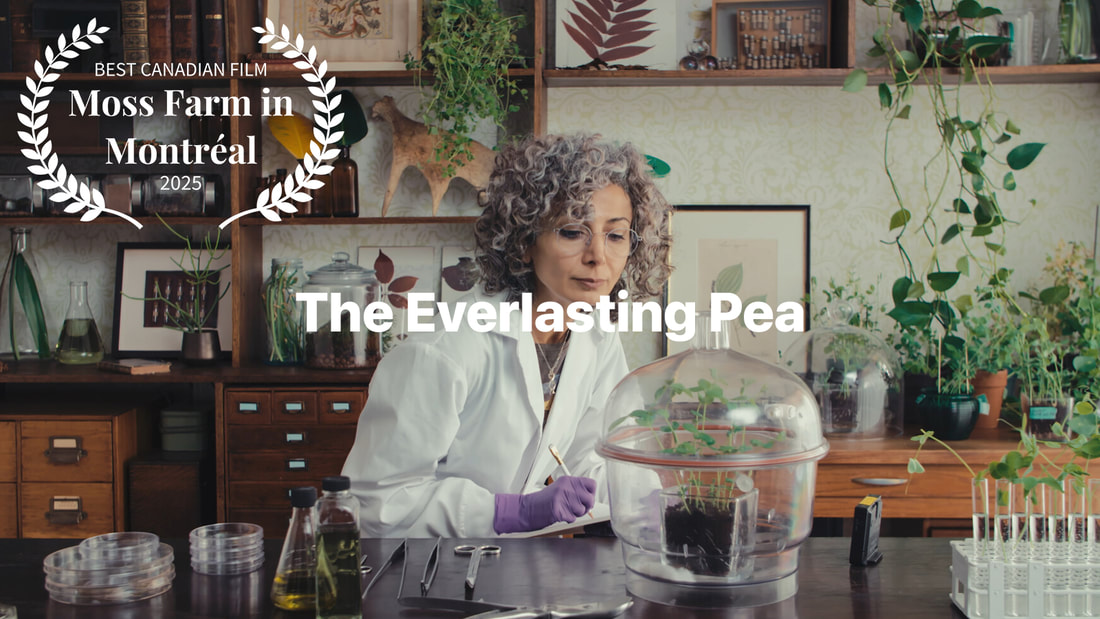BEST CANADIAN FILM

the everlasting pea
An enchanting exploration of plant life that blends scientific inquiry with ancient ruins and mysterious dreamscapes. Through the eyes of a scientist questioning plant consciousness, a pea plant dreaming of its past in Rome’s Colosseum, and a botanist unravelling a mystery, The Everlasting Pea invites a profound reimagining of our relationship with the vegetal world.
Country of Origin: Canada
SU RYNARD, Director
Country of Origin: Canada
SU RYNARD, Director

Filmmaker Su Rynard's diverse body of work spans decades and embraces dramatic, documentary, experimental, and installation forms. Her work has screened in festivals around the world including the Toronto Intl Film Festival, the Rotterdam International Film Festival and AFI Docs. She has received numerous awards, notably the Buffon Prize from Pariscience and the prestigious Alfred P. Sloan Feature Film Prize.
Born on the Canadian Armed Forces base in Downsview, she grew up in a world apart from the city of Toronto surrounding her, never-the-less, she was drawn to the art world at an early age. Rynard graduated from the Ontario College of Art and was a Director Resident at the Canadian Film Centre. Her current work is inspired by science, ecology, and the complexities of the human relationship to the natural world. She lives and works in Tkaronto (Toronto).
Director Statement
I am often drawn to science, ecology and the human relationship to the natural world as a departure point for creative inquiry. Every new project begins with an exploration. My starting place is curiosity, digging deep into the subject matter informs how the story will be told. Inspiration for this work is from two main sources. The true story of a 19th century botanist (Richard Deakin) who undertakes a survey of plant life in the ruins of the Roman Colosseum, and recent scientific research using anesthetized plants that questions our preconceptions of plants as passive greenery without agency or value beyond their service to humans.
Plants react to sedatives and can be anesthetized just as humans and other animals can be. How exactly this sedation works is not yet understood, but the effect of falling asleep in a plant can be revealed by time lapse photography. When the anesthetic wears off, the plant ‘wakes up’ as if they are regaining consciousness. Does this suggest that the plant is conscious to begin with? Taking this further, when a plant goes under anesthetics or ‘falls asleep’, does it dream?
Through Deakins story we explore the links from an apocalyptic time in the Roman empire to the development of botany in Europe, to modern biology and ultimately to our turbulent ecological times. Today the twin crisis of climate change and biodiversity loss makes us aware of our precarious dependence on the planet, and demands that we re-envision our relationship to the natural world.
I wrote the script in tandem with imagining the visuals that would be created to tell the story. The images were then realized over a year via a multitude of techniques. My house was turned into two different film sets. The style of the CGI aminations were inspired by paintings of the Romantic period, with detailed plant renderings created in the final stages. My scientist neighbour became the fictional scientist. My artist husband re-created Richard Deakins drawings and notes. I scanned and pressed plants from my garden and created backyard and living room tableaus.
Some of the Pea plants used in filming were grown from seeds sourced from the gardens at Down House, the home of Charles Darwin in Kent UK. Darwin, best known for his theory of evolution was also a preeminent botanist. His gardens were a ‘living laboratory’ for his plant studies. He recognized plant intelligence and his ideas are even more prescient today.
